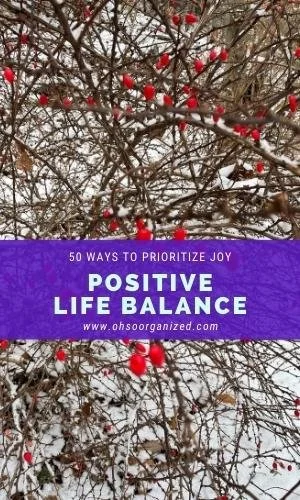Clutter has many sources. It can be internal, such as in mind clutter, or external, like physical things or spaces. Clutter can also appear in your schedule. Believe it or not, it’s beneficial when you’re bothered and stressed by clutter. Why? You’re at a tipping point, which means you’re more likely to make a positive change.
In last week’s blog, I shared my latest clutter discoveries. In the comments, one of my wonderful friends and colleagues, Seana Turner, mentioned an idea from The Happiness of Subtraction episode on The Happiness Lab podcast hosted by Dr. Laurie Santos. I was intrigued, so I listened to the podcast, which inspired this post.
In the episode, Laurie talked with Tim Harford, author of Messy, about the value of subtraction and how it can enhance one's life. He noted that often, people tend to add more instead of taking things away. Does this sound familiar?
You take on one more commitment you don’t have time for.
You purchase more pants and shirts and stuff them into a closet overflowing with clothes.
You fill your vacation itinerary with so many places to visit that you’re too exhausted to enjoy the trip.
You go to another tag sale and bring home “bargains” you don’t have space for and will never use.
You enroll your kids in so many extracurricular activities that they feel overwhelmed and anxious without downtime.
The Big Clutter Question
During the podcast, Laurie asked a thought-provoking question:
“If forced to take one thing away, what would it be?”
I’ve been mulling this over for a few days. Except for the word “forced,” I love the question. It asks you to look directly at the extras in your life.
What is putting you over the edge?
What ‘one thing’ can be released?
What ‘one thing’ no longer belongs?
What can go?
You are the decision-maker. No one is forcing you. Instead, view this as an opportunity. This is your opening to make a change. Release the things holding you back.
“Opportunity Cost”
Tim talked about how something has an “opportunity cost.” For example, “…everything you say yes to is getting in the way of something else.” The idea is to subtract as much as possible to make space for the “good stuff.”
What are you “over-subscribed” to?
What can you remove from your schedule?
How does saying no make space for saying yes to what you value most?
What could you be doing if you subtracted something else?
“Subtraction lets you create space for what you treasure most.”
“Yes-Damn” Effect
Laurie discussed the familiar “yes-damn” effect from Hal Hershfield’s book Your Future Self about our time biases. This has probably happened to you before. Laurie said you get asked:
“Hey, do you wanna do this presentation?
Or Hey, do you wanna go to this kind of not very interesting dinner party?
Or Hey, do you wanna sign up for something in your schedule and you feel kind of bad?
So you’re like, yes.
Then weeks later, that project or that dinner party comes up and that’s where you say, damn.”
You said yes to something, and time passed. When you see it on your schedule, you regret the yes and are annoyed at yourself.
“No-Yay” Effect
Laurie prefers and uses a different strategy. Through “periodic reminders,” the “no-yay” effect reinforces the reward of saying no.
She shares this example. Let’s say someone asks you if you want to do a specific project, and you know the due date. You know you don’t want to do it, so you say no.
You could leave it there, at your no. Instead, you take it one step further. On the project’s due date, you write on your calendar, “Hey Laura, you didn’t have to do the project this day.”
Time elapses. You arrive at that future due date, see your note, and recognize how much harder things would have been if you had committed to doing that project. “And then you have the experience of the yay.”
Clutter shows up in our minds, schedules, and homes. Feeling bothered is a positive because it’s your cue for change. Subtraction lets you create space for what you treasure most.
What are you ready to subtract? If you need help making a plan or decluttering, reach out anytime. Please email me, Linda, at linda@ohsorganized.com, call 914-271-5673, or schedule a Discovery Call. Decluttering is possible, especially with support.












